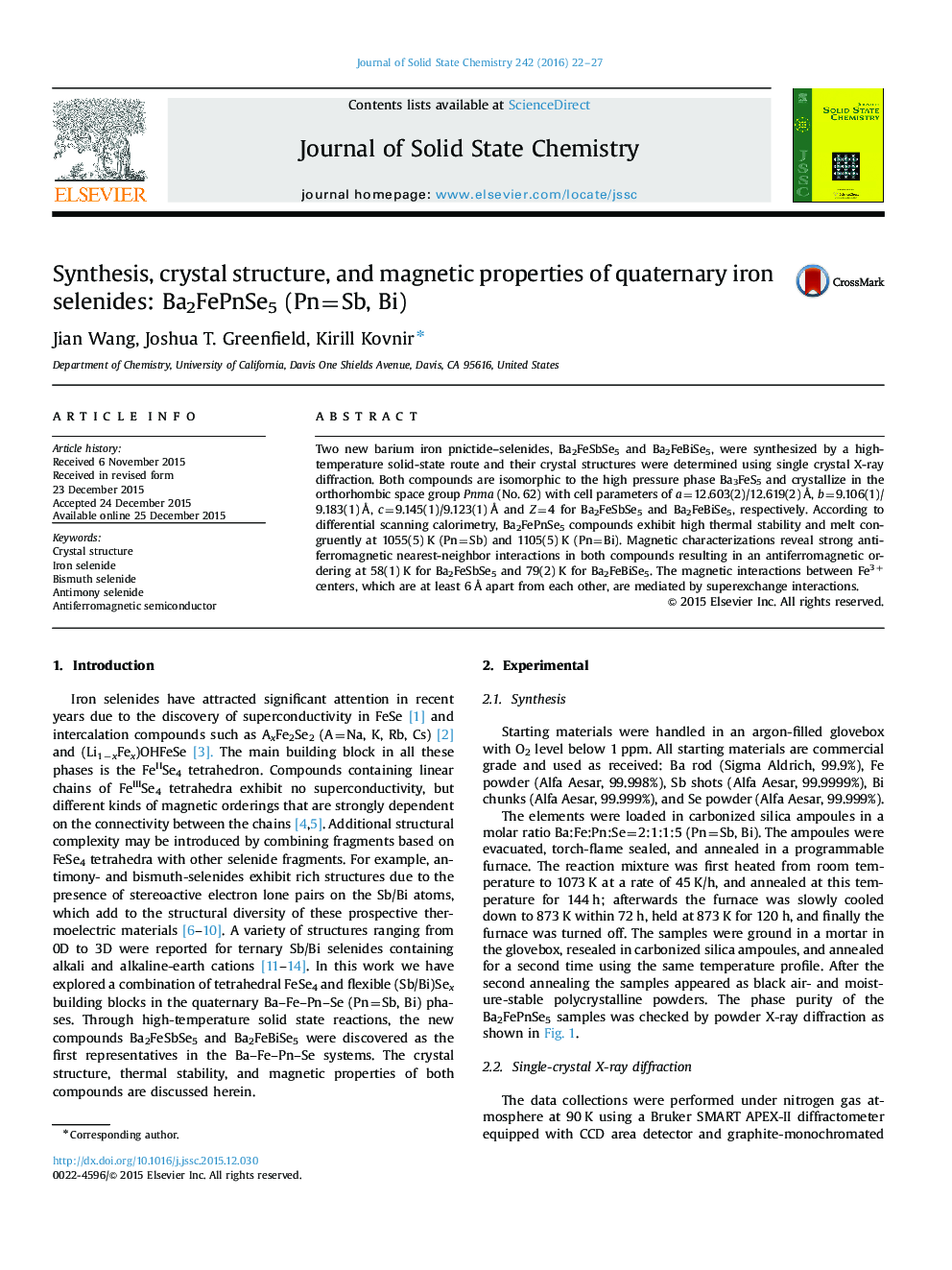| Article ID | Journal | Published Year | Pages | File Type |
|---|---|---|---|---|
| 1412108 | Journal of Solid State Chemistry | 2016 | 6 Pages |
•New compounds Ba2FeSbSe5 and Ba2FeBiSe5 have been synthesized.•The crystal structure was determined by single crystal X-ray diffraction.•Both compounds melt congruently at temperatures above 1000 K.•Ba2FeSbSe5 and Ba2FeBiSe5 exhibit AFM ordering at 58 K (Sb) and 70 K (Bi).•Magnetic exchange between Fe3+ is mediated by either Se–Sb(Bi)–Se or Se–Ba–Se bridges.
Two new barium iron pnictide–selenides, Ba2FeSbSe5 and Ba2FeBiSe5, were synthesized by a high-temperature solid-state route and their crystal structures were determined using single crystal X-ray diffraction. Both compounds are isomorphic to the high pressure phase Ba3FeS5 and crystallize in the orthorhombic space group Pnma (No. 62) with cell parameters of a=12.603(2)/12.619(2) Å, b=9.106(1)/9.183(1) Å, c=9.145(1)/9.123(1) Å and Z=4 for Ba2FeSbSe5 and Ba2FeBiSe5, respectively. According to differential scanning calorimetry, Ba2FePnSe5 compounds exhibit high thermal stability and melt congruently at 1055(5) K (Pn=Sb) and 1105(5) K (Pn=Bi). Magnetic characterizations reveal strong antiferromagnetic nearest-neighbor interactions in both compounds resulting in an antiferromagnetic ordering at 58(1) K for Ba2FeSbSe5 and 79(2) K for Ba2FeBiSe5. The magnetic interactions between Fe3+ centers, which are at least 6 Å apart from each other, are mediated by superexchange interactions.
Graphical abstractIn Ba2FeSbSe5 and Ba2FeBiSe5 the magnetic interactions between Fe3+ centers, which are at least 6 Å apart from each other, are mediated by superexchange interactions.Figure optionsDownload full-size imageDownload as PowerPoint slide
